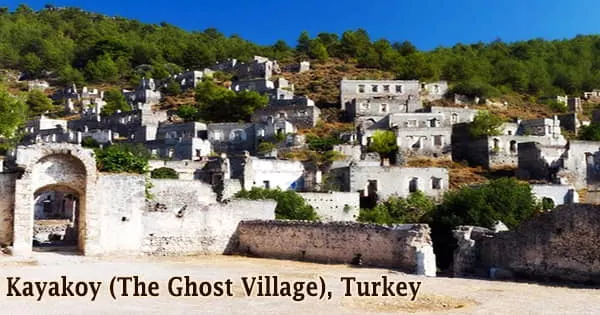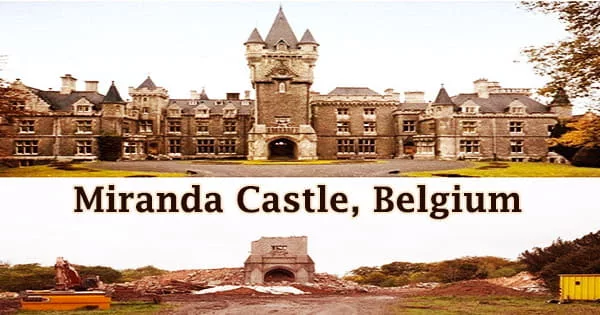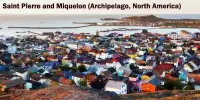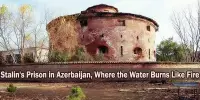Kayaköy, also known in Greek as Karmilissos (Ancient Greek: Καρμυλησσός), abbreviated to Lebessos (Ancient Greek: Λεβέσσoς), and pronounced in Modern Greek as Livissi (Greek: Λειβίσσι), is an open-air museum in the Fethiye district of Turkey, just outside of the hustle and bustle of Oludeniz and Hisaronu. It is now a community 8 kilometers south of Fethiye in the ancient Lycia region in southern Turkey. The town name changed from Ancient Greek to Koine Greek during the Roman period, then to Byzantine Greek during the Middle Ages, and ultimately to the Modern Greek name that its residents used until their final exodus in 1923.
The community is at a short distance from Fethiye and Olu Deniz, two lively and popular beach towns. It’s desolate, lifeless, the homes are falling apart, and the streets are abandoned. Greeks migrated from the Dodecanese Islands in the seventeenth century and established Levissi as a settlement. The Greeks resided for ages in this very big town with roughly 3.500 dwellings. The town itself used to be a happy mix of Greeks and Turks.
Kayaköy, which dates back to the 14th century, was forcibly abandoned after the conclusion of the Greco-Turkish War, when a population exchange saw Muslims and Christians traded between Greece and Turkey so that each country might claim one primary religion on the road to ethnic and national homogeneity. It became the abandoned town it is now as a result of multiple major events, including WW1 and a terrible earthquake.
The ghost town, which is currently maintained as a museum village, is made up of hundreds of run-down but generally intact Greek-style buildings and churches that cover a small slope and serve as a rest stop for travelers visiting Fethiye and adjacent Ölüdeniz. When the “population exchange” between Greece and Turkey began in 1923, when the city had roughly 6,000 Greeks, the Greeks were compelled to depart. According to National Geographic, a world leader in geography, mapping, and exploration, Turkey’s Kaykoy Ghost Town was named one of the Top 10 Ghost Town in the World.
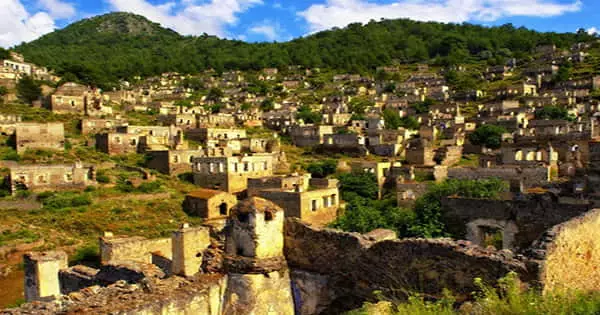
The community, on the other hand, has an atmosphere and an overwhelming presence. Following the Kayakoy history, once the Greeks left, the Levissi city was renamed Kayakoy after a neighboring valley named Kaya Cukuru (pothole in Turkish), and unoccupied buildings were filled with Muslims from Macedonia. Except for tour groups and roadside merchants selling handcrafted things, the settlement is largely deserted.
There are, however, a few residences that have been renovated and are being occupied. The village is also famous for its appearance in Russell Crowe’s film “The Water Diviner.” Kayakoy has subsequently been designated as an international friendship and peace community by UNESCO. Kayaköy was largely deserted of its former residents at the onset of the Greco-Turkish War (1919–1922).
The few remaining Greeks of Livissi and Makri were compelled to flee their houses and board ships to Greece after the war ended in September 1922. The village is built on a slope, with a stunning assortment of abandoned buildings and chapels. Around 500 dwellings remain in ruins and are protected by the Turkish government, including two Greek Orthodox churches, which are the ghost town’s most notable structures. There is a private museum dedicated to the town’s history. A fountain from the seventeenth century rises in the heart of the settlement.
A strong earthquake struck the lovely but abandoned town in 1957, inflicting considerable damage to the structures. The hillside houses, schools, chapels, churches, businesses, and cafés, which were left undisturbed, still remain today, albeit weakened by the natural elements, as if to protest their abandonment. According to certain reports, UNESCO designated Kayaköy as a World Friendship and Peace Village. This is, however, unofficially inaccurate, and was most likely spread by a local tourism authority.
Kayakoy may be a ghost town, but creativity and research help it come to life. The majority of the villagers were skilled artisans. The Kato Panagia Church is one of the most striking vestiges of the village’s prosperous past, with fading paintings, vaulted ceilings, and arches telling the narrative of another era when the edifice oozed the majesty of religion. Tourism is currently the most important economic factor in the area. The settlement will be largely restored, according to plans.
A few people sell food and trinkets to visiting visitors, and there are a few occupied buildings on the hill, distant from the main cluster of abandoned properties. Despite the fact that the museum village has aged owing to the impact of strong winds and winters, its tragic past and eerie, ghost town ambiance continue to inspire brave travelers. In his novel “Birds Without Wings,” set during WWI and the closing days of the Ottoman Empire, British author Louis de Bernieres utilized a fictitious version of the abandoned settlement.
